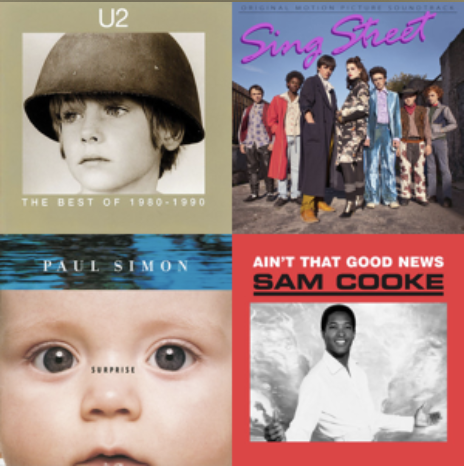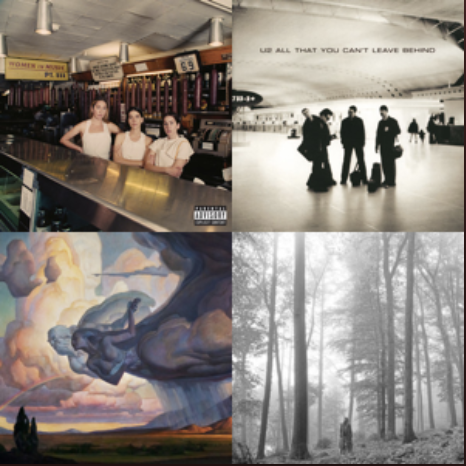George Eliot once said, “I think I should have no other mortal wants, if I could always have plenty of music.” She would have loved our modern era. It seems that we have more music available to us, and more music being produced, than ever before. iTunes has over 20 million songs for sale, and as of October 4, 2011 had sold its 16 billionth song. Spotify, the latest trending digital music source, has a 15 million song collection. One of the slogans on their website reads, “Get listening. Millions of tracks are now at your fingertips.” Millions! If the average length of a song is four minutes, and you listened 24/7, it would take you about 7 years to listen to just one million songs. That’s a lot of music.
And more music than ever is being made today. With the advent of YouTube and the rise of distributors like CDBaby, Tunecore, and Bandcamp, it has become easier to skirt around the traditional industry and make your own music– and many people are doing it.
Under this looming avalanche of sound, one needs certain survival skills. It’s not possible to listen to everything out there, or even what any good musical aesthete is “supposed” to listen to, so we’re forced to pick and choose. This is well and good.
Much of the time, at least in my own observations, I find our choices are governed by personal taste, what we “like.” Now, taste certainly has something to do with it. But lately I have wondered whether, in our consumer-driven, individualistic society, taste hasn’t started to get the better of us.
Think of this scenario: have you ever been in the iTunes store, or on YouTube, and said “Naaah” after listening to a new track of music for maybe 30 seconds? An artist’s creative output, judged within a few blinks of an eye. I raise my hand as guilty. Now, sometimes music is just that bad, and deserves an easy dismissal, but I fear that when this becomes a pattern in our listening experience, it is a sign of the tyranny of taste.
In his pop culture analysis, All God’s Children and Blue Suede Shoes, Ken Myers observes,
“In an age of egalitarianism and relativism, it is easier than ever to regard matters of taste as wholly private and personal. I like Bach, you like Bon Jovi, praise the Lord anyhow. But is aesthetic judgment purely a subjective and neutral matter? Is ‘beauty’ exclusively in the eye of beholder? Is something ‘beautiful’ just because I like it, or does it have some objective quality rooted in creation that allows me to recognize that it is beautiful?”
Myers raises the question of an objective standard of goodness and beauty in art, and he argues that such aesthetics are spiritually based, “Culture has very much to do with the human spirit. What we find beautiful or entertaining or moving is rooted in our spiritual life.” This is true of any culture that has held to an objective worldview. The problem, Myers points out, is that today’s more subjective ethos arises out of a cultural relativism. With the disappearance of any concept of transcendence, personal preference reigns. The result of relativism and the commodification of music, is that pop culture today is increasingly market driven. We are so awash in it wherever we go, that it is only fitting that individual taste would be the dominant factor in our artistic consumption decisions.
The problem is, when we let our own sense of taste dominate our artistic sensibilities, we can begin to think that music as an art form is our servant, that it is there for our sole benefit, and exists only to satisfy us. A lot of music and music listening today has become a form of emotional masturbation. We tend to like and listen to music that matches our mood or makes us feel good.
But music does not exist solely for us, which is hard to remember in our age of market-crafted pop stars and he-who-gains-the-most-votes-wins talent shows. As the late Francis Schaeffer observed about perspectives on art, “The first is the most important: A work of art has value in itself….If we miss this point, we miss the very essence of art.”
Scott Avett, singer and songwriter of the Avett Brothers, has recently made a similar connection between the value of art and the “success” of art in pop culture terms:
“In all types of art there is a choice. Create what you feel because you believe in it, or create what you think will be ‘successful’. The difference between the two is this: with the latter, that which will be ‘successful’ can only succeed’ for a temporary moment with you and your physical state. But that which is created in sincerity, that which reveals part of your soul without control or plan, will outlive all of us and be generated between men for years to come. Though the work may not succeed in number of viewers, it still bears a life.”
As music listeners, I think it is helpful to remind ourselves of this truth from time to time. What we hear bears a life of its own, sparked by the life that created it. And if it has been made for beauty, that beauty is part of it regardless of our like or dislike.
So what’s the pay dirt? How should understanding this reflect in our music listening experience?
First, I think it should remind us not to devalue the very thing that we enjoy. Treating music as just a means to an emotional end makes listening a utilitarian, rather than artistic, pursuit.
Second, we should be aware of how the dominance of taste can close us off to types of music that we wouldn’t normally listen to, which is to our detriment. Technology has made a wide variety of music more available to listeners, but it has often also led us into our own own tiny, personally-crafted ghettos.
This leads to my third point: we should actively find ways to expand our own sensibilities. One thing that I have done in recent years is to seek out and listen to older musicians who have been recognized for their musical talent and prowess. I admit, the sometimes dated nature of the sound has occasionally jarred my personal preferences, but I’ve also been surprised by how much truth and beauty I have found.
Fourth, we should seek to become more aware of our own spiritual traditions and what they teach us about beauty. What is the place and value of beauty and art in our worldview? This question of aesthetics is an age-old one, and its pursuit is one which will not offer up easy, drive-through-window answers. I’m still wrestling with these questions, with my own culture, and with my place within it. But these questions are worth grappling with and worth pursuing, for they are the pursuit of the eternal over the temporal.




